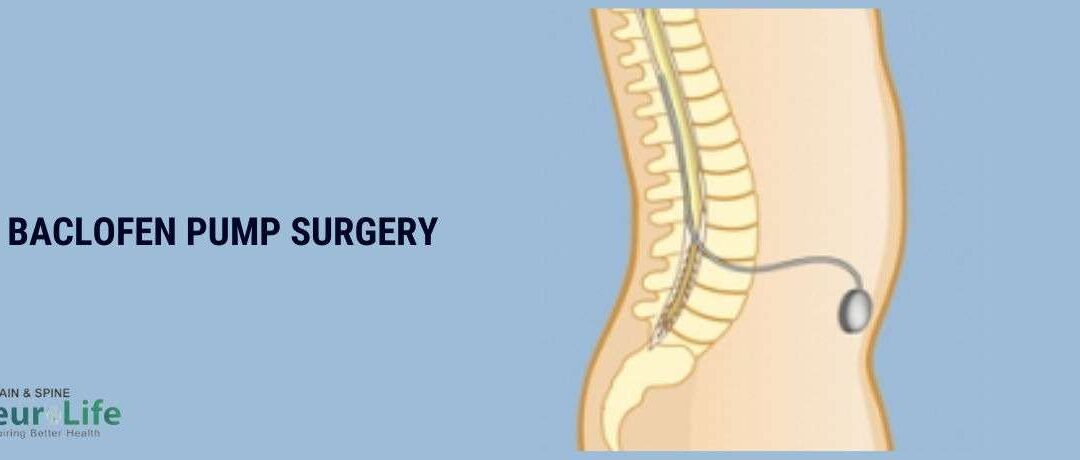What is Baclofen Pump Surgery?
Baclofen pump implantation is a surgical procedure performed to lastingly implant a pump that delivers baclofen to the intrathecal space in the spinal cord to treat moderately severe to extreme spasticity which is obstinate to oral medications.
It delivers baclofen in small doses continuously directly to the spinal cord, growing the therapeutic benefits, and causing rarer and less severe side effects in comparison to the oral medication.
What is the goal of baclofen pump surgery?
The aim of the baclofen pump surgery is to reduce spasticity and rigidity connected to multiple sclerosis, spinal cord injuries, cerebral palsy or various neurological concerns with minimal dose. The dose of baclofen used in the pump is less than one-tenth of the oral dose.
How is baclofen pump surgery done?
During a pre-operative test, baclofen is injected into the thecal sac of the spinal canal (using a small Lumbar Puncture needle) and the patient is evaluated by the functional neurosurgery team for over several hours to regulate how well the medicine relieves the spasticity and rigidity.
If a positive result is observed then the patient might be a candidate for implantation of a permanent pump to carry the drug. The pump chamber is inserted in the anterior abdominal wall by making a small pouch while the patient has been given a general anaesthetic.
A small catheter is then put in via a needle into the spinal fluid space and is moved upward till the desired spinal cord level under X-ray guidance. Then, the catheter is tunnelled under the skin to the anterior abdominal wall and is well connected to the pump chamber.
The pump is loaded with the baclofen and is programmed by a computer to continuously release a quantified dose which is determined by the neurosurgeon. The baclofen pump surgery is finished when the incision is closed with sutures or medical staples.
The sutures have to be removed later if non-absorbable sutures or staples are used once the incision is healed. The baclofen pump surgery procedure generally lasts for 1-2 hours.
What is the success rate of baclofen pump therapy?
The success rate of baclofen pump implantation therapy is very favourable in patients who had a positive response in the preoperative intrathecal baclofen test. The baclofen dose requirement is approximately 500mcg/day as against oral dose which is 20–40 mg /day.
How long will patient stay in the hospital?
After the baclofen pump implantation surgery, patients remain in the hospital for 3 days. Each individual patient’s return to regular activity is mainly reliant on his/her pre-operative condition as well as age. The daily dose of baclofen is gradually increased by the Functional Neurosurgeon on OPD follow-ups and a well tolerable dose is set over 1 month.
Benefits of baclofen pump surgery:
When baclofen is carried into the intrathecal space, it hinders or stops the spasticity messages to reach the brain. With the help of baclofen pump surgery, patients can hope to achieve the following:
- Decrease of severe spasticity
- Decrease in the requirement for oral anti-spasticity medications
- Enhanced ability to do activities of daily living
- Simpler caregiving
- Better comfort
Refilling and Follow-Up:
Baclofen Pump refilling would be required depending on the pump size, dose and concentration of baclofen. Usually, refills are required every 3-6 months.
The next refilling date is calculated by the Functional Neurosurgeon depending on the daily dose. Refills are done in opd by means of a syringe & needle and take about 15-20 minutes. At that period, baclofen doses are adjusted based on the effects which are being seen.

